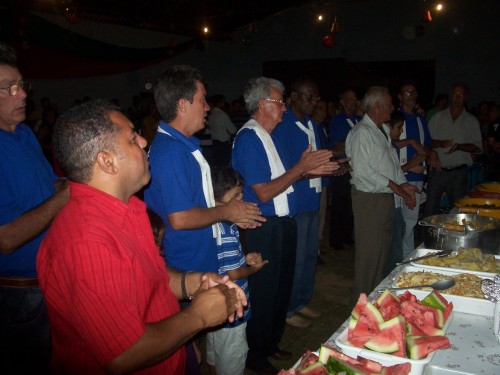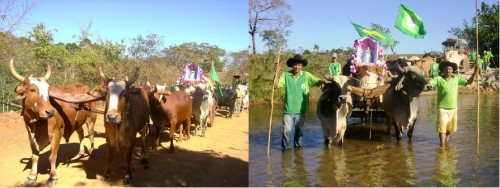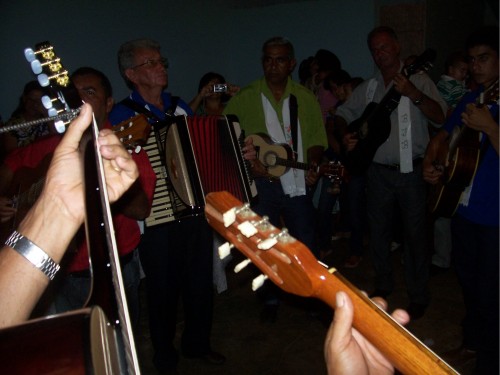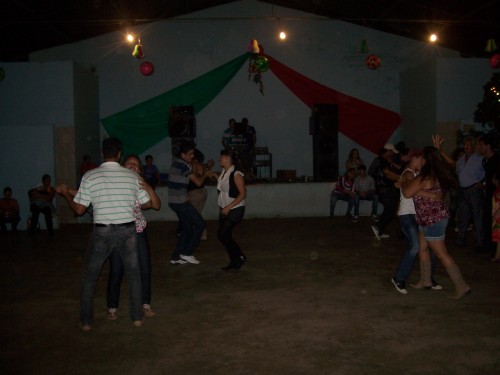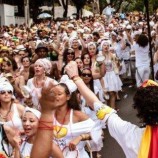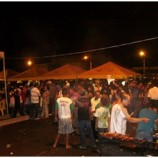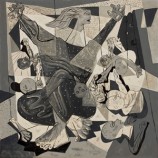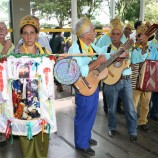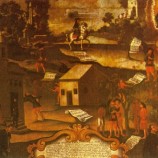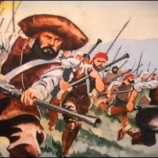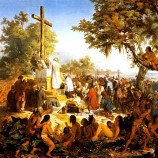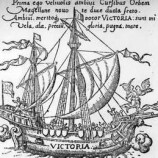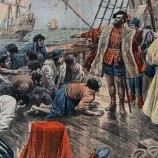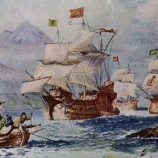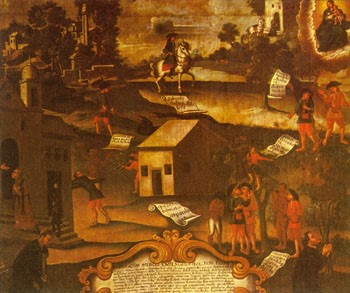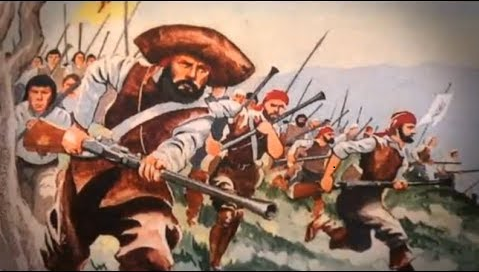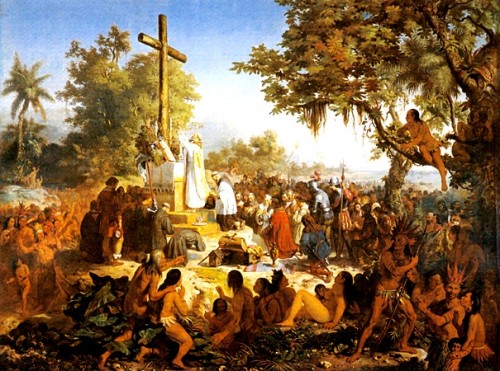III – Andrequicé: Culture and Faith, Pilgrimage and Celebration
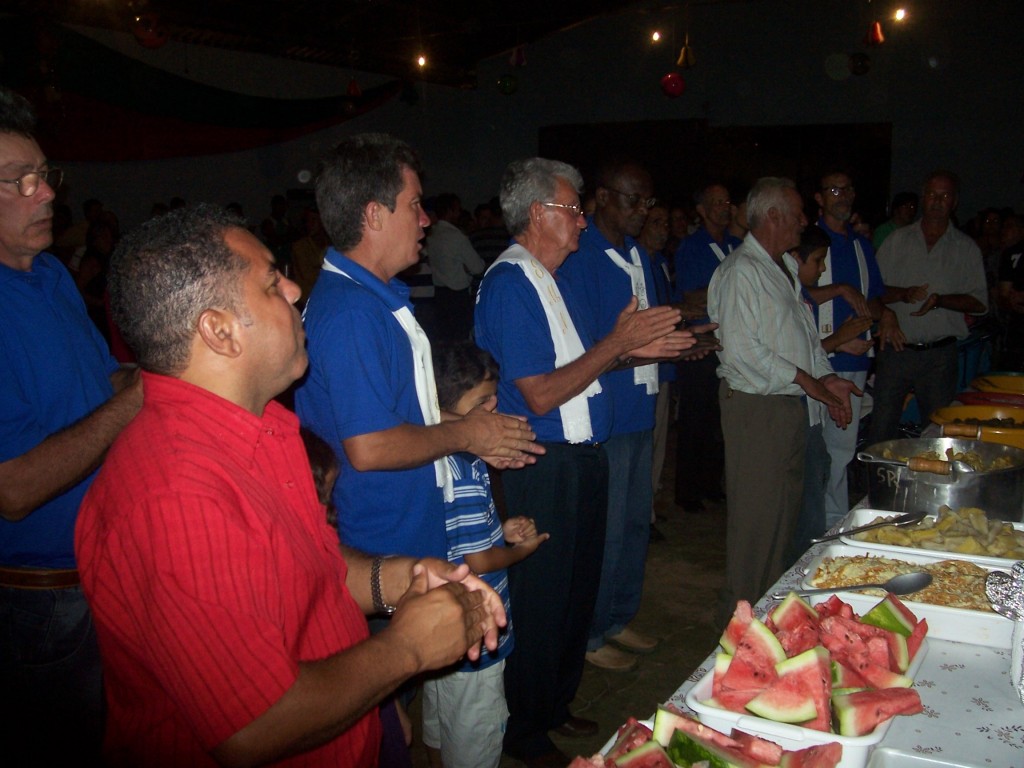
From the series Religious Pilgrimages in the Great Backlands
Every year in the first half of August, pilgrims drawn by their faith come in from various different regions of the country to the sanctuary dedicated to Mary, mother of Jesus, venerated by the title Our Lady of Abadia in the small community of Andrequicé in the county of Presidente Olegário, located inside the tourist circuit of Tropeiros de Minas, in the State of Minas Gerais.
According to historians, the pilgrimage of Our Lady of Abadia in Andrequicé has its origin in the 19th century, when a plot of land was donated for the construction of a chapel dedicated to the Saint. Thereafter began the visitations and pilgrimages to the site. Today the sanctuary receives thousands of pilgrims arriving by motorcycle, car, bicycle, bull wagons, on horseback and on foot. No matter their means of journey, the important thing is to arrive in peace, to give thanks and keep promises.
The festival officially takes place on the 15th of August, but from the first day of the month on, the town receives a good number of pilgrims, tourists and ambulant vendors that circulate and movement the streets generating a boost in local trade.
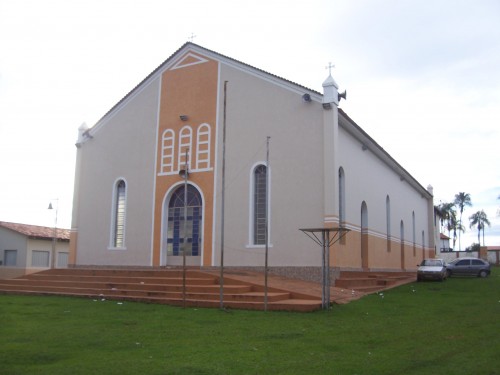 As with all pilgrimages, during the days of the festival, the pilgrims participate daily in the sanctuary with the celebrations, the Masses, ask for forgiveness of their offenses, participate in the Church activity, baptize their children and celebrate the joy of meeting with the Lady of Abadia, protector of the simple people against all mundane evils, and fraternize with their travelling companions.
As with all pilgrimages, during the days of the festival, the pilgrims participate daily in the sanctuary with the celebrations, the Masses, ask for forgiveness of their offenses, participate in the Church activity, baptize their children and celebrate the joy of meeting with the Lady of Abadia, protector of the simple people against all mundane evils, and fraternize with their travelling companions.
What is most impressive to the tourists and visitors on the pilgrimage of Our Lady of Abadia in Andrequicé, is undoubtedly the energy brought from dozens of pilgrims who arrive on bull wagons from diverse far away regions. They are people who are proud of the rich heritage left by the pilgrims of past times. That is why they do not mind the bulls’ slow-going pace and despite the long journey, they consider it God’s grace to retake the trip, year after year, to the Sanctuary of Our Lady of Abadia where they seek hopefully the strength and blessings needed to overcome the challenges marked by life’s contradictions.
According to information from members of the Movimento Vivacidade of Patos de Minas, the region’s principle central city, a new path of faith is being planned between their city and the small town called “The Path of Abadias”. The route through the beautiful mountain landscapes should begin at the Church also dedicated to Our Lady of Abadia in Patos de Minas and run one hundred kilometers of dirt road. One can witness along the way the vastness of the savannah and the stone mountain walls that form giant canyons framing a marvelous sunset. Definitely an ideal trip for those who wish to connect the spirit of faith with the mysterious world sculpted by Mother Nature in the far reaches of Minas Gerais.
The Community of Andrequicé is a very pleasing place and has a satisfactory infrastructure to ensure the welfare of the pilgrims and visitors such as: housing for rent, paved roads, health clinic, and public security through the presence of the Military Police and support areas equipped with the population’s voluntary workers and local health professionals throughout the celebrations.
Another important religious and cultural tradition in Andrequicé are the festivities of the Holy Kings through the “Folia de Reis” (Festival of the Kings) which add values such as faith, devotion, entertainment and solidarity. The festivities of Folia de Reis in Andrequicé happens every year on the 24th of December, when a procession of musicians and dancers dressed into character, go from door to door to the homes of the devout, leaving messages through songs bursting with faith and hope that narrate from the Annunciation of the angel of Maria to the Three Wise Kings visit to baby Jesus.
The oldest residents of Andrequicé claim that for over a century the Three Kings Festival has been passed down from generation to generation, from father to son. In this ambit it would be prudent to highlight the noteworthy work of Padre Preguinho, minister of the neighboring Diocese of Paracatu and born resident who has engaged himself so that the tradition may occur in a dimension of renewal, in an atmosphere of spirituality and to restore the religious spirit. Every year he is the reveler coordinator of the event and is proud to have received this family tradition, especially from his father who has for many years been the region’s leader during the festival.
Traditionally, the festivity of the Three Kings was brought to Brazil by the settlers in the 18th Century, for the purpose of fun and entertainment only, but gradually received influences from other cultures, largely by the African-Brazilians who introduced musical instruments, song, dance and their own peculiar tap dance, enriching the universe of religious Catholic expression. However, with the process of Romanization led by the institutional Church, the Festival of the Three Kings was considered profane and abolished from the ecclesial world, but continued alive as an expression of faith, joy and religiosity through many parts of the population strata, taking place outside the temples and in the absence of clergy men.
Today the Festival of Kings is being readmitted by the Catholic Church in a pastoral way as a strong expression of popular faith. The successive Episcopal Latin American conferences held so far have recognized these manifestations of popular religious culture for their integrity and cultural roots as indispensable elements of the religious world.
The importance of the pastoral work being done by Padre Preguinho is at a moment where he is ensuring that the Festival happens in a church atmosphere, where the revelers and participants are invited to experience the mystical liturgy of Christmas spirituality that follows to the celebration of the epiphany of the Lord, making the connection with the tradition of popular character with the official liturgy of the Catholic Church, strengthening the participants’ faith, respecting culture and cultivating tradition.
The closing of the festivities happens on the 5th of January when a crown is passed around and the revelers, or those responsible for the coming event the following year, are announced and pledge to maintain the tradition with much respect, devotion and solidarity. The closing is marked with a fireworks show, prayers, hymns, litanies, regional song, a plentiful banquet, sweets and drinks, and the never lacking traditional and exciting forró, the most traditional dance of the Brazilian interior.
Finally, dear reader, we can conclude that of the various religious expressions, men and women of all times seek to sustain their faith in God by going to meet him in all different ways. In the sanctuaries or the people-circles of the Festival of the Three Kings, frequented mostly by ordinary people of rural cultures, who go there to sustain their faith, renew their hopes and find the strength to fight in defense of the dignity of life, for a culture of peace and a more brotherly way of living together, anchored in the ideals of justice.
Related Articles


